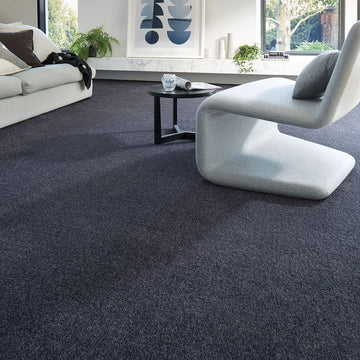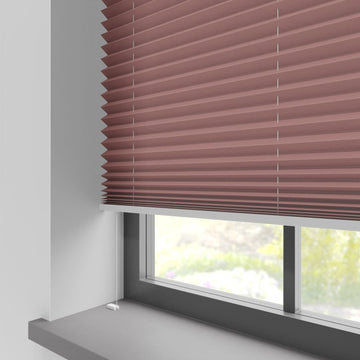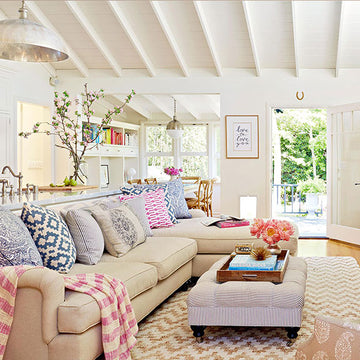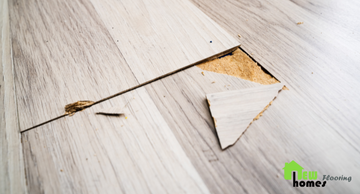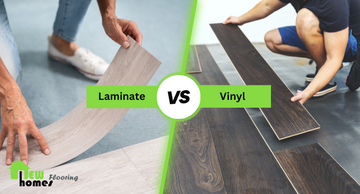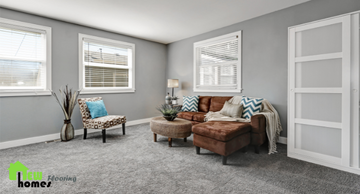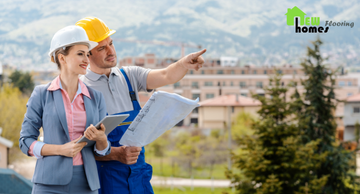As a forward-thinking developer, staying ahead of the curve is essential, ensuring that every aspect of your properties reflects the highest standards of quality and durability. Your reputation is intertwined with the materials you select, and in the case of flooring, this means moving beyond traditional choices like laminate to embrace superior options that promise both excellence and longevity for potential purchasers. Let's explore why laminate flooring is falling out of favour and examine superior alternatives that offer better value, practicality, and design flexibility.
The Downside of Laminate in Modern Developments
- Susceptibility to Moisture and Humidity
Laminate flooring, despite its popularity, faces significant challenges when exposed to moisture and humidity. The core materials, often made from high-density fibreboard, are prone to absorbing moisture. This absorption can lead to swelling, warping, and even the development of mould, posing not just aesthetic issues but also potential health risks. In environments like kitchens, bathrooms, or basements, where humidity and spills are common, this vulnerability becomes a critical drawback, potentially leading to frequent replacements and increased long-term costs.
- Aesthetic Limitations and Repetitiveness
Whilst laminate offers a variety of designs, its ability to truly replicate the natural beauty of materials like wood or stone is limited. The patterns, often printed in repetition, can lack the unique, organic variation found in natural materials. This repetitiveness can detract from the bespoke, high-end look sought in modern developments, making laminate less desirable for projects aiming for a premium aesthetic.

- Wear and Tear Visibility
Over time, laminate flooring can show signs of wear more prominently than other flooring options. Scratches, dents, and fading are common, especially in areas with high foot traffic. This wear and tear can compromise the floor's appearance, necessitating more frequent replacements or refurbishments. For developers and homeowners looking for long-lasting elegance, this can be a significant concern.
- Environmental and Health Concerns
The production and disposal of laminate flooring raise environmental concerns. Some laminate products can emit volatile organic compounds (VOCs), affecting indoor air quality and posing health risks, particularly in poorly ventilated spaces. Additionally, the environmental impact of manufacturing and disposing of laminate, which is not as easily recyclable as other materials, is a growing concern in an increasingly eco-conscious market.
- Installation Sensitivities
Installing laminate flooring comes with its own set of challenges. It requires a perfectly level and clean subfloor, and any irregularities can lead to issues like creaking or lifting over time. This sensitivity can make installation more labour-intensive and potentially more costly, especially in older buildings where subfloors may not be perfectly even.
- Repair and Replacement Challenges
Unlike flooring options where damaged sections can be easily replaced, repairing laminate flooring can be a complex task. Often, it involves replacing entire sections of the flooring, which can be disruptive and costly. This aspect makes laminate less appealing for high-traffic areas where damage is more likely.
- Acoustic Properties
Laminate flooring's hard surface can contribute to higher noise levels within a building. It lacks the sound-dampening properties of softer materials, which can be a significant drawback in multi-level developments or spaces where noise reduction is a priority. This acoustic factor is an important consideration for developers focusing on creating serene and comfortable living environments.
LVT and Vinyl: The Superior Alternatives
LVT and vinyl flooring have ascended as leaders in the flooring market, and their rise to prominence is well-justified. These materials stand out for their exceptional durability, superior water resistance, and their ability to replicate the aesthetics of natural materials in a way that laminate struggles to achieve.
Durability and Water Resistance
LVT and vinyl boast remarkable resilience, capable of enduring the rigours of a bustling household without succumbing to wear and tear. Their composition provides an impervious barrier to moisture, making them ideal for use in kitchens, bathrooms, and basements—environments where laminate's susceptibility to water can lead to warping and damage. This robustness ensures that areas of high traffic can retain their elegance without the worry of rapid deterioration.
Authentic Designs
Utilising cutting-edge printing techniques, LVT and vinyl offer a spectrum of designs that authentically replicate the look and feel of natural materials. Whether it's the intricate grain of hardwood or the cool touch of stone, these flooring alternatives provide realistic textures and intricate patterns that can transform and uplift the aesthetic of any interior space, adding a touch of sophistication and natural charm.
Eco-Friendly and Health Conscious
On the environmental and health spectrum, LVT and vinyl are making significant strides. Many products available today are manufactured using recycled content and are designed to be fully recyclable at the end of their life, thus supporting a circular economy. Additionally, they are engineered to emit low levels of VOCs, promoting a healthier indoor atmosphere and contributing to the overall well-being of occupants.
Ease of Installation and Maintenance
The installation of LVT and vinyl is notably less complex and often swifter than that of laminate, offering savings on both time and labour expenses. Maintenance is equally convenient; these materials are a breeze to clean and demand minimal ongoing care, contrasting with laminate which may require more meticulous attention to maintain its appearance over time.
Conclusion: Making the Right Choice
Reflecting on these points, it becomes evident that LVT and vinyl flooring are superior selections for both new constructions and refurbishments. They deliver the practicality, aesthetic diversity, and eco-consciousness that contemporary homeowners and developers demand.
As the industry progresses beyond laminate, we should embrace the sophisticated solutions that LVT and vinyl represent. Opting for these materials means choosing enduring quality and style, as well as investing in the long-term viability and eco-friendliness of our properties. The time has come to discard the outdated and wholeheartedly welcome the new vanguard of flooring.

